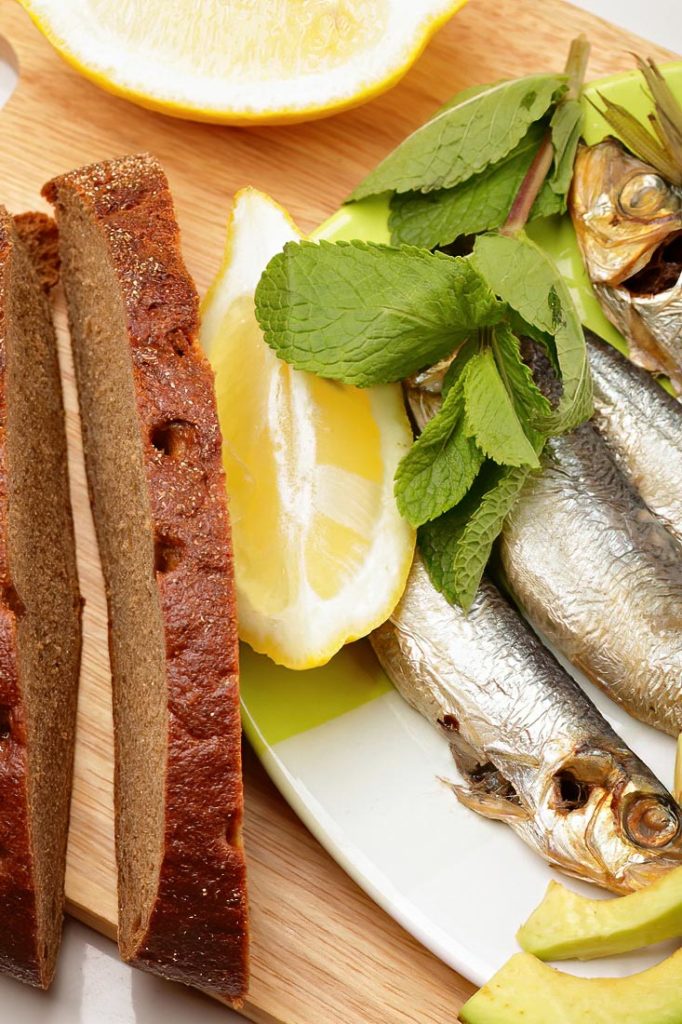Smørrebrød is a traditional Danish open-faced sandwich, typically served on dark rye bread with various toppings. This recipe features a classic version with fish, fresh herbs, and a touch of lemon, giving it a refreshing and simple flavor that can be enjoyed as a snack, appetizer, or light meal.
Preparation Time
Prep Time: 10 minutes
Total Time: 10 minutes
Ingredients (for two people)
- 4 slices of Danish rye bread
- 4 smoked or pickled herring fillets (or any preferred fish)
- 1 lemon, sliced into wedges
- Fresh mint or dill leaves for garnish
- 1 tablespoon butter, softened
- 1 avocado, sliced
- Salt and pepper to taste
1 tablespoon is approximately 15 ml, and a teaspoon is approximately 5 ml.
Preparation Method
Step 1: Prepare the Rye Bread
Start by spreading a thin layer of butter on each slice of rye bread. The butter adds richness and helps balance the sharpness of the fish.
Step 2: Assemble the Smørrebrød
Place a herring fillet (or fish of choice) on each slice of buttered bread. If using whole fish, ensure it is deboned and cleaned properly. Season with a pinch of salt and pepper, if needed.
Step 3: Add Toppings
Garnish each sandwich with fresh mint or dill leaves for freshness. Arrange avocado slices beside the fish to add creaminess to the dish.
Step 4: Serve
Serve with lemon wedges on the side. To enhance the flavor, squeeze lemon juice over the fish just before eating. If desired, enjoy your smørrebrød with additional herbs or pickled vegetables.

Tips and Tricks
- Choosing the Bread: Authentic Danish smørrebrød is always made with dense, dark rye bread. If you can’t find Danish rye bread, you can substitute it with any hearty, whole-grain bread, but avoid soft or white bread, as they won’t hold up to the toppings.
- Perfect Fish: Smoked or pickled herring is the traditional topping, but you can experiment with smoked salmon, mackerel, or even gravlax for variety. Ensure the fish is fresh and properly prepared (deboned and cleaned).
- Balance of Flavors: The sharpness of the fish can be balanced with a touch of sweetness. Adding a slice of apple or a spoonful of honey mustard sauce can provide a sweet contrast to the salty fish.
- Extra Garnishes: You can elevate your smørrebrød by adding thinly sliced radishes, cucumbers, or pickled onions. These garnishes will add both color and crunch to your dish.
- Lemon Zest: To add brightness, grate some lemon zest over the top of the fish before serving. It adds a fragrant citrus note that pairs well with the smoky or briny fish.
Serving Suggestions
Smørrebrød can be served alongside a simple salad, pickled vegetables, or even a boiled egg for added protein. Traditionally, it’s enjoyed with a cold beer or snaps (a Danish spirit).
Nutritional Information (Per Serving)
- Calories: 280 kcal
- Protein: 15g
- Fat: 12g
- Carbohydrates: 28g
- Fiber: 6g
- Sodium: 450 mg
Dietary Modifications
- Gluten-Free Option: Use gluten-free bread to make the smørrebrød suitable for gluten-intolerant guests.
- Vegetarian Option: Substitute the fish with hard-boiled eggs or roasted vegetables such as beets or mushrooms.
About Smørrebrød
Smørrebrød, meaning “butter and bread”, is a cornerstone of Danish cuisine. It typically consists of a slice of buttered rye bread topped with cold cuts, fish, cheese, or spreads, with herbs and other garnishes. Smørrebrød became popular in the 19th century and is a beloved part of Danish culture, often served for lunch or special occasions.
Cultural Context
The simplicity of smørrebrød reflects the Danish appreciation for fresh, high-quality ingredients. Traditionally, it’s prepared with locally sourced fish, rye bread, and seasonal herbs, making it a sustainable and wholesome choice. Smørrebrød is a delicious meal and a celebration of Denmark’s rich culinary heritage, enjoyed casually and during festive gatherings.


